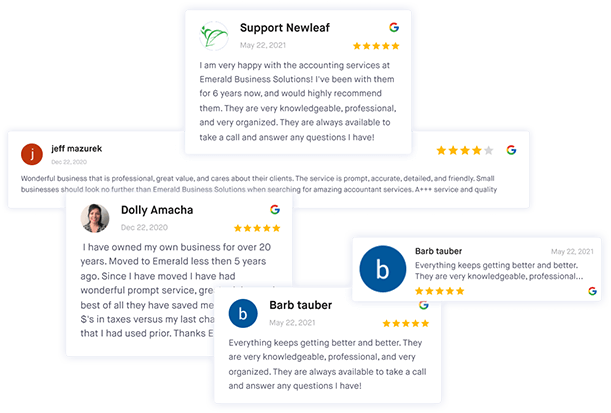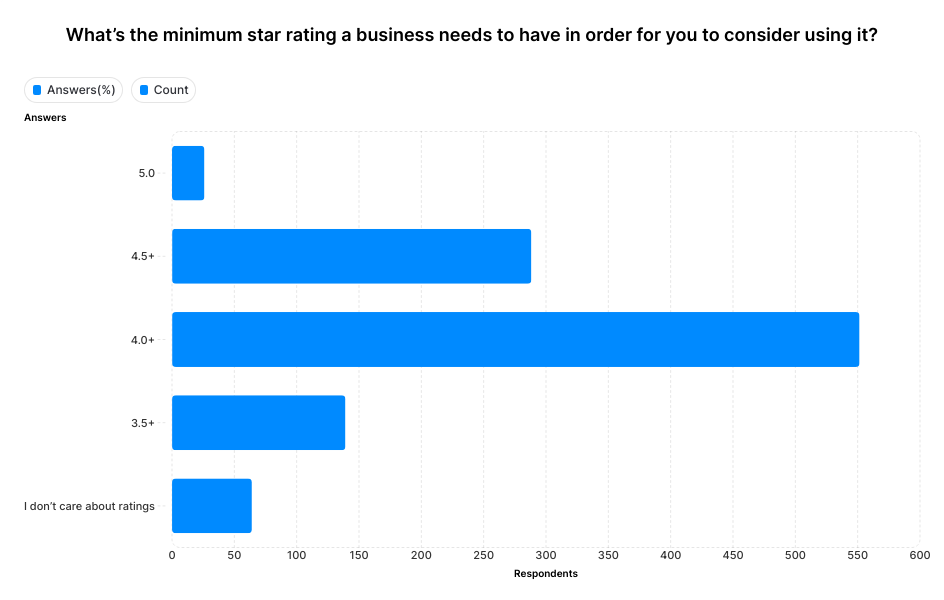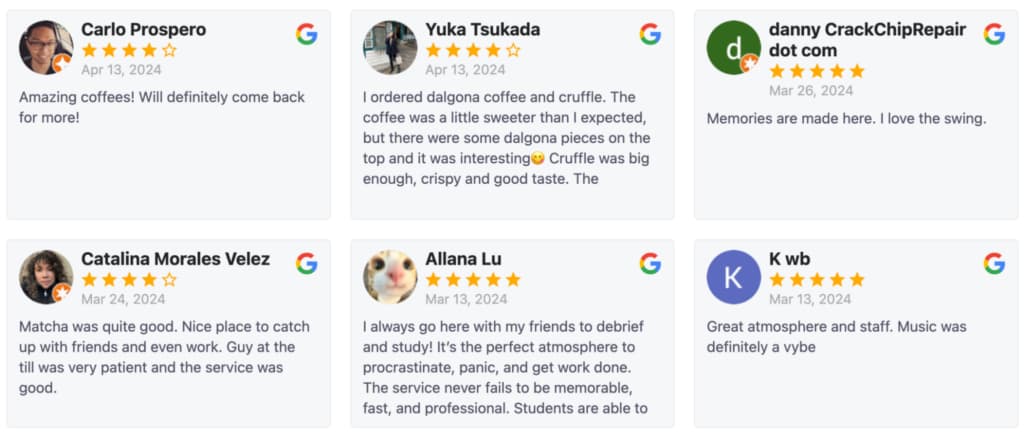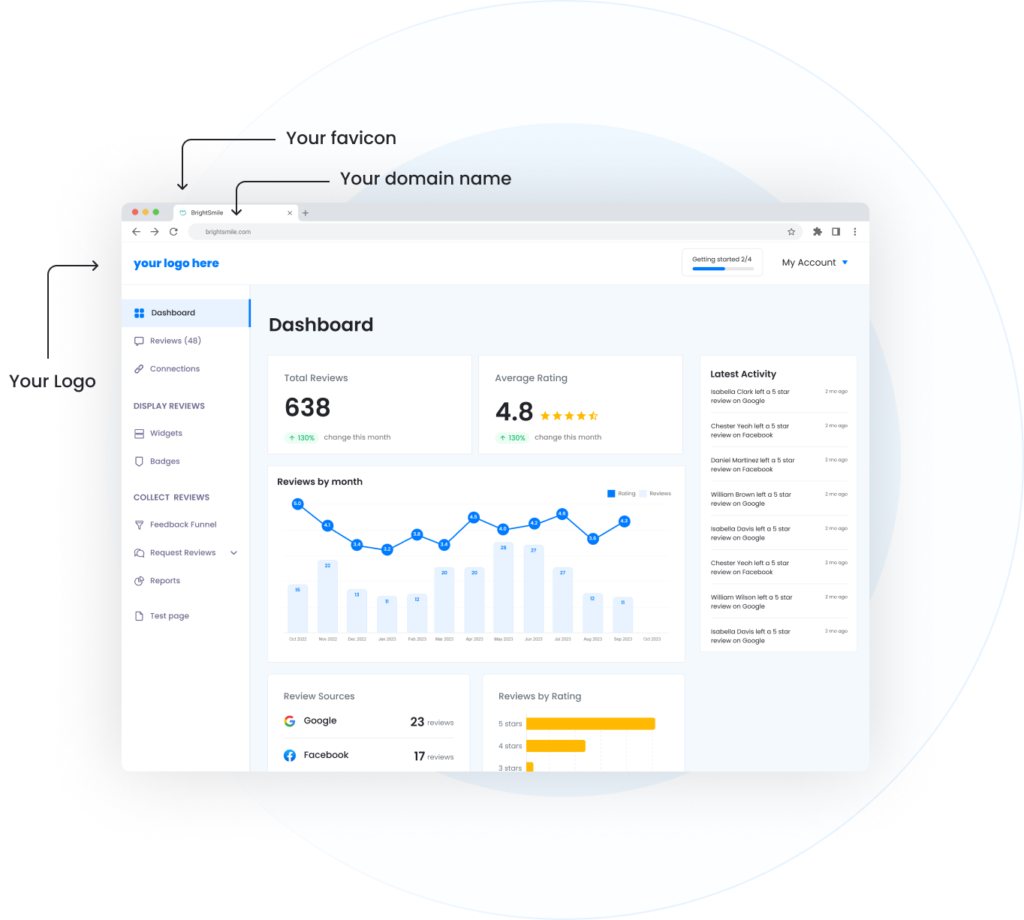Growing a digital marketing agency is about more than signing a few new clients. It’s about building a business that consistently attracts the right accounts, delivers strong results, and scales without burning out your team or yourself.
In this guide, you’ll learn how to grow a digital marketing agency by tightening your positioning, building reliable lead generation, creating scalable delivery systems, and using tools, reviews, and automation to support long-term growth.
1. Clarify Your Ideal Client Profile (ICP)
Clarifying your ideal client profile helps you focus your marketing, sales, and delivery on the accounts that are easiest to win and most profitable to serve.
Your ICP is a description of the type of company that’s the best fit for your agency. It’s usually defined by industry, size, budget level, buyer role, and the main problem you solve.
A clear ICP makes your marketing more relevant, your proposals easier to write, and your service delivery more consistent.
It also strengthens your brand by signaling who you serve and who you don’t, which attracts inbound leads that already understand your strengths and expectations.
Here’s how to clarify your ICP:
- Identify your best-fit clients: Highlight the three to five accounts you would gladly clone, since they reveal where expectations align and your systems work well.
- List shared traits across those accounts: Write down details like industry, company size, pricing tier, internal resources, and decision-making style so you can see real patterns instead of relying on intuition.
- Define the core problem you solve for them: Focus on a specific business challenge, such as increasing qualified pipeline or improving conversion rates, so you can quickly filter out poor-fit opportunities.
- Write a one-sentence “sweet spot” statement: Combine the shared traits and the main outcome you deliver into a short line you can use on your website, in sales calls, and in outbound messaging.
- Update your messaging to match your ICP: Replace generic statements with language that speaks directly to your ideal client’s situation and outcomes, and watch lead quality improve.
- Refine your ICP every quarter: Treat it as a living document that evolves as your agency grows, your processes mature, and your best-fit clients become clearer.

Unlock a new revenue stream for your agency
Start offering online reputation management services with ReviewsOnMyWebsite's white label review management software.
2. Position Your Agency As A Premium Brand
Positioning your agency as a premium brand lets you compete on value instead of price.
Your positioning is how the market perceives you relative to alternatives, shaped by your messaging, visual identity, case studies, pricing, and sales experience. When your brand mirrors every other agency offering the same services, prospects treat you like a commodity.
A premium position shows that you solve a specific, valuable problem for a clearly defined type of client, which helps you charge higher retainers and attract buyers who want a strategic partner.
Audit Your Brand for Clarity and Consistency
Review your website, proposals, and social profiles to see whether a stranger could instantly understand who you serve and what outcome you deliver. Many agencies bury this behind generic claims, which makes them blend in with competitors.
Rewrite vague or repetitive elements so everything reinforces one clear message. When buyers instantly understand your focus, premium pricing becomes far easier to justify.
Rewrite Your Value Proposition to Lead With Outcomes
Your value proposition should highlight the business result you create rather than a list of services. Describe the transformation you help clients achieve, such as increasing qualified demos or improving conversion rates.
When prospects see a direct link between your work and their revenue goals, they perceive your agency as strategic. This outcome-driven approach also shifts sales conversations toward impact instead of deliverables.
Refresh Your Visual Identity and Proof Points
Your visual identity should feel professional and consistent so prospects trust you at first glance. Pair this with case stories that clearly explain the client’s challenge, the strategy you applied, and the results.
Strong proof points reduce friction during evaluation and reinforce that your agency delivers on its promises.
Set a Minimum Engagement Size to Protect Your Position
Setting a minimum engagement size helps you avoid low-budget clients that drain resources and weaken your positioning.
It signals that your agency expects serious partnerships and filters out accounts that won’t be profitable. Treat this boundary as a strategic standard rather than something to negotiate away, and your perceived value will increase over time.
3. Build A Predictable Lead Generation Engine
Building a predictable lead generation engine helps you avoid relying on random referrals or last-minute outreach.
It involves having a small set of repeatable activities that bring qualified prospects into your pipeline each month. When it works, you stay out of the “sell → deliver → sell again” cycle that keeps many agencies stuck.
Here’s how to build a consistent lead generation engine:
- Document your current lead sources and monthly averages: List where your leads come from today and calculate how many qualified prospects each channel produces. This gives you a baseline to improve from.
- Choose two or three channels with early traction: Warm outbound, educational content, and referral partnerships are often the most reliable starting points. Limiting your focus helps you produce consistent volume.
- Set weekly activity targets for each channel: Define simple actions such as outreach messages, content pieces, or partnership calls. Targets make your lead flow predictable instead of reactive.
- Track opportunities and closed deals by channel: Monitoring real outcomes shows which channels bring profitable clients and which ones waste time. Over time, you will see clear patterns worth scaling.
- Scale what converts and refine or pause the rest: Increase activity on channels that consistently close and adjust messaging or targeting where results are weak. This leads to a healthier, more predictable pipeline.
- Review performance every month: Compare lead quality, close rates, and revenue across channels. Use those insights to adjust your activity for the next month.
4. Define Scalable Service Packages And Pricing
Defining scalable service packages and pricing makes it easier to sell, deliver, and grow your agency without reinventing your process for every new client.
Service packages bundle deliverables, timelines, and outcomes into a few clear tiers, which helps prospects choose based on value instead of custom negotiation. This structure also reduces scope creep, shortens sales cycles, and protects your margins.
Here’s how to build service packages that scale:
- List and evaluate your current services: Identify which services you deliver most often, which ones you enjoy, and which generate the strongest margins. This helps you decide what belongs in your core packages and what should be removed or offered separately.
- Group your services into three clear tiers: Create a foundational option, a growth-focused option, and a performance option aligned with your ideal client profile. These tiers help prospects self-select based on their maturity and goals.
- Define deliverables, communication cadence, and expected outcomes: Spell out exactly what clients receive in each tier so expectations are clear from the start. This clarity reduces ambiguity and anchors your pricing around business impact rather than tasks.
- Set minimum contract lengths and firm scope boundaries: Establishing a minimum engagement window gives your team enough time to deliver meaningful results. Clear boundaries also prevent projects from expanding beyond what the package covers.
- Review profitability and delivery effort every quarter: Compare planned scope to actual hours and results to see where adjustments are needed. Use this information to refine pricing, add guardrails, or streamline package components.
- Use packages as your default proposal structure: Present prospects with these tiers rather than custom offers unless there is a compelling reason to deviate. This keeps your sales process efficient and ensures your team delivers consistent work across accounts.
5. Create Repeatable Delivery Systems
Creating repeatable delivery systems helps you deliver consistent results as your client list and team grow. A delivery system is the collection of processes, templates, and tools you use to plan, execute, and report on client work.
Without documentation, performance depends on individual team members, and every vacation or turnover introduces risk. Repeatable systems make your agency more resilient, reduce errors, and help you spot issues earlier.
Map the Full Client Lifecycle
Outline the journey from signed proposal to renewal or offboarding. Break it into stages such as onboarding, discovery, strategy development, build, optimization, reporting, and review.
Assign tasks, owners, and tools to each stage so responsibilities are clear. This lifecycle map ensures clients receive a consistent experience regardless of who is executing the work.
Turn Key Stages Into Standard Operating Procedures
Document each major stage with step-by-step instructions, checklists, and links to templates so the team can work without guesswork. Store these SOPs in a shared workspace for easy access and updates.
Strong documentation shortens new-hire onboarding and reduces mistakes caused by unclear expectations.
Build Templates for Strategy, Content, and Reporting
Create templates for discovery calls, strategy documents, content outlines, and monthly reports so no one starts from a blank page.
These templates save time, reinforce professionalism, and capture best practices in one place. Review and update them regularly based on client feedback and your most effective campaigns.
Use a Project Management Tool to Enforce Consistency
Adopt a project management platform to organize tasks, deadlines, and responsibilities. Build reusable workflows for each delivery stage and assign clear owners for every task.
Use weekly reviews to spot deviations or bottlenecks so you can refine workflows and improve margins, quality, and client satisfaction.

Unlock a new revenue stream for your agency
Start offering online reputation management services with ReviewsOnMyWebsite's white label review management software.
6. Hire And Structure A Growth-Oriented Team
Hiring and structuring a growth-oriented team lets you step out of day-to-day delivery and focus on scaling the agency. As your client base grows, you cannot stay involved in every task and still move the business forward.
A clear team structure ensures work flows smoothly, clients know exactly whom to contact, and decisions can be delegated without losing control. Without this structure, the founder becomes the bottleneck, which limits growth and increases burnout risk.
Here’s how to build a team built for sustainable growth:
- Define the core functions your agency needs: Identify roles such as account management, strategy, creative, media buying, and operations. This gives you a clear map of what must be covered for delivery to stay consistent as the agency grows.
- Decide what you will own and what needs to be hired: Choose the areas you want to keep personally in the short term and list the roles that should be filled by new hires or contractors. This helps you hire strategically instead of reactively.
- Write clear role descriptions with measurable success criteria: Include responsibilities, decision-making authority, and metrics such as client retention or campaign performance indicators. Clear expectations make onboarding smoother and reduce confusion.
- Introduce regular one-on-one meetings and a weekly team sync: Use these meetings to review client health, active projects, and upcoming capacity needs. Consistent communication keeps your team aligned and allows you to catch issues early.
- Document career paths and promotion criteria: Show team members how they can grow within the agency over time. When people see a future with you, they stay longer and contribute more effectively to the agency’s momentum.
7. Retain Clients And Upsell For Long-Term Value
Retaining clients and upselling them into deeper engagements is often the fastest and most predictable way to grow a digital marketing agency.
Retention keeps accounts happy and productive over many months or years, while upselling expands the scope or value of an existing engagement once the initial work is successful.
Together, these strategies increase lifetime value, reduce pressure on your lead generation engine, and create more stable revenue.
Here’s how to retain and expand client relationships:
- Design a structured onboarding process: Use onboarding to set expectations, define success metrics, and introduce the team members responsible for the account. A strong start creates confidence and reduces confusion later.
- Run regular strategy or performance calls: Review results, connect them to business outcomes, and outline the next steps your team will take. These conversations reinforce value and keep clients engaged in the process.
- Watch for signals that a client is ready for more: Signs include hitting lead or revenue goals, expanding their product lines, or increasing their internal marketing activity. When these shifts happen, your work becomes more valuable and expansion becomes easier.
- Prepare focused expansion proposals when opportunities appear: Keep proposals short, specific, and tied to a clear outcome the client cares about. This makes the decision straightforward and positions the upsell as a strategic next step rather than a sales push.
- Track churn and retention rates consistently: Review these numbers quarterly and interview both current and former clients to understand why they stay or leave. These insights help you improve processes, strengthen relationships, and adjust your services where needed.
8. Use Reviews And Social Proof To Win Trust
Using reviews and social proof helps you close more deals and justify premium pricing by proving that other clients already trust and value your agency. These signals include testimonials, star ratings, case studies, and social posts where clients describe their experience.
According to the State of Online Reviews report, 92.5% of buyers have read an online review in the past year, and more than 78% will not consider a business if its rating is below 4 stars, which means your agency clients are influenced by the same habits.

You can make reviews a core part of your growth strategy by collecting them consistently and placing them where prospects decide whether to contact you.
Here are a few tips that can help:
- Encourage clients to leave detailed reviews: Ask satisfied clients to leave honest, specific feedback after meaningful milestones so the review reflects a clear before-and-after story.
- Provide a simple review process: Tell clients how long it will take and offer prompts such as the challenge you solved or the outcome delivered. This reduces friction and increases the likelihood that clients will write detailed, persuasive reviews.
- Showcase reviews at key decision points: Place testimonials in areas like your home page hero, service pages, and contact page so prospects see relevant proof at the exact moment they evaluate you. Include specifics such as client role, industry, and measurable outcomes to make each review more relatable and credible.
- Share reviews across the channels your audience uses: Post recent reviews or case highlights on platforms where your prospects spend time, and frame them as stories of challenges solved or results achieved. Publicly acknowledging reviews reinforces gratitude and helps extend the lifespan of each piece of social proof.
- Respond thoughtfully to reviews: The State of Online Reviews report shows that 78.3% of buyers say seeing a thoughtful response to a negative review increases their trust, which means your replies matter as much as the reviews themselves. Consistent, professional responses signal maturity, reliability, and strong client care.
Pro tip: You can use ReviewsOnMyWebsite’s review widget to display top client reviews on your site with ease.

9. Expand Service Offerings Strategically
Expanding service offerings strategically helps you increase revenue per client without diluting your brand or overcomplicating your operations.
Service expansion means adding capabilities that solve additional, related problems for your ideal clients, such as conversion rate optimization, lifecycle email, analytics consulting, or creative production for new channels.

Unlock a new revenue stream for your agency
Start offering online reputation management services with ReviewsOnMyWebsite's white label review management software.
The key is to add services that align with your positioning and build on strengths you already have.
Here’s how to expand your services responsibly:
- Review common client requests: Look for recurring moments where clients ask for help you currently decline or refer elsewhere. These patterns reveal natural expansion opportunities that align with real demand.
- Identify services that complement your strengths: Choose one or two offerings that match your expertise and support the outcomes you already deliver. Expanding in familiar directions protects quality and prevents your team from being spread too thin.
- Check delivery feasibility before committing: Evaluate whether you have in-house talent or trusted contractors who can deliver the new service at a high standard. If you lack reliable capability, the service may create more operational stress than value.
- Pilot the service with existing clients: Offer a defined scope and price to a small group of accounts who already trust your work. Use their feedback to refine the process, expectations, and deliverables before rolling it out more broadly.
- Package and productize what works: If the service performs well and fits naturally into your workflows, turn it into a clear offering with structured deliverables and pricing. If it doesn’t, refine or drop it rather than forcing it into your model.
Pro tip: ReviewsOnMyWebsite’s white label reputation management platform allows you to start selling reputation management services to your clients today.
Create branded client portals, manage multiple clients, and add a new revenue stream to your agency with ease.

Future-Proof Your Agency For 2026 And Beyond
Future-proofing your agency helps you stay relevant as channels, platforms, and buyer expectations evolve.
Here’s how to do it:
- Schedule a quarterly “future review” with your leadership team: Use this session to discuss notable changes in search, social platforms, regulations, and tools. Keep a simple shared document where you log trends, risks, and opportunities so you can see how they develop over time.
- Focus your investments on skills, tools, and processes that will matter for years: Prioritize deeper data literacy, ethical and practical use of artificial intelligence, and closer integration with client teams. This helps you avoid chasing every short-lived trend while still staying ahead of meaningful shifts.
- Align with how clients are already adopting AI and automation: The State of Small Business AI Adoption report shows that 84% of small business owners plan to expand their use of AI in the next 12 months, which means many of your future clients will expect guidance on using AI in their marketing. Position your agency as a partner that can help them navigate both the opportunities and the risks.
- Run structured experiments instead of ad hoc tests: When you test a new tool or approach, define a clear goal, timeline, and evaluation criteria before you start. Treat each experiment as a small project with an owner, and document what you learn so you can scale what works and quickly discard what doesn’t.
- Share your future-focused initiatives with clients: Communicate how you are adapting your methods, training your team, or refining your frameworks to keep up with changes. This reassures clients that you’re paying attention to the bigger picture and not just repeating the same playbook year after year.
- Treat future-proofing as a compounding habit, not a one-time project: Small, consistent investments in learning, process upgrades, and better tools accumulate over time. This steady progress can set your agency apart from competitors who only react when change becomes urgent.
Marketing Agency Growth Checklist
Growing an agency becomes far easier when you have a simple, structured way to track what you’ve already implemented and what still needs attention.
To help you turn this guide into a practical operating system, we prepared a complete Marketing Agency Growth Checklist you can review monthly or quarterly.
It covers everything you need to grow your agency in one place. Use it as a working document you revisit with your team, update as your agency evolves, and rely on when setting goals or reviewing performance.
Frequently Asked Questions
What Is the Fastest Way to Grow a Digital Marketing Agency?
The fastest sustainable way to grow a digital marketing agency is to specialize in a clear niche and become known for solving one specific problem extremely well. Pair that specialization with a predictable lead generation system and strong client retention so your growth becomes consistent instead of relying on one-off wins.
How Much Should I Charge Monthly for My Marketing Agency Retainer?
Your retainer should reflect the value you create for the client as well as your delivery costs and desired profit. Make sure the price aligns with the revenue or profit impact your work can realistically influence.
When Should I Hire My First Account Manager in an Agency?
You should hire your first account manager when client communication and project coordination start taking too much of your time as the owner. The role protects your focus and improves the client experience by owning meetings, updates, and day-to-day relationship management.
How Can I Measure the Success of My Agency Growth Efforts?
Track both financial outcomes and operational health to understand how your agency is performing. Metrics like recurring revenue, client retention, profit margin, utilization, and delivery timelines give you a complete picture of sustainable growth.
What Will Digital Marketing Agencies Look Like in Five Years?
Digital marketing agencies will be more integrated with client teams and rely heavily on data, automation, and AI-supported workflows. Humans will focus more on strategy and creative problem-solving while software handles routine tasks.
Make Your Agency Growth Plan Real
Reading about how to grow a digital marketing agency is only useful if it leads to clear decisions and actions in your own business.
Choose two or three strategies from this guide that address your biggest current bottlenecks, such as unclear positioning, inconsistent lead flow, or weak systems.
Turn each strategy into a simple 90-day project with specific tasks, owners, and targets, and review progress weekly with your team.
As you implement these changes and start to see results, you can layer in additional strategies, refine your offers, and gradually build an agency that grows in a controlled, sustainable way rather than through constant firefighting.




